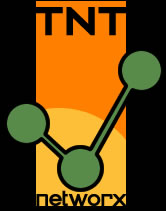Techie
Windows 7 can’t Sleep
by Logan Rogers-Follis on Apr.14, 2014, under Techie
Sleep not showing as an option in Windows 7?
Right-click ‘Comment Prompt’ and select ‘Run as administrator’
Use the command:
powercfg -energy
After which you can see the report by Opening “c:\windows\system32\energy-report.html” in a browser to see the results.
In my case it was a Device Driver called VgaSave, so if that is what is causing your issue see below:
First update the video driver
Next go into Device Manager and View -> show hidden devices
Scroll down and expand ‘Non-Plug And Play Drivers’ -> Uninstall VgaSave
Reboot
How to regenerate TLS/SSL keys after Heartbleed with CentOS
by Logan Rogers-Follis on Apr.11, 2014, under Techie
Below are some How-To’s on regenerating TLS/SSL keys after patching your CentOS server to fix the Heartbleed OpenSSL issue.
Regenerate new SSH Server Keys:
SSH1 protocol:
ssh-keygen -q -f /etc/ssh/ssh_host_key -N '' -t rsa1
SSH2 protocol:
ssh-keygen -f /etc/ssh/ssh_host_rsa_key -N '' -t rsa
ssh-keygen -f /etc/ssh/ssh_host_dsa_key -N '' -t dsa
Generate/Regenerate new Exim SSL/TLS key:
- First make sure your Exim is compiles with SSL/TLS support
- Generate Keys (D-H key is optional; adjust .key and .cert names to match server config):
- Edit the Exim config file and add the following lines (as needed):
- Restart Exim
cd /etc
openssl req -x509 -newkey rsa:2048 -keyout eximrsa.key -out eximrsa.cert -days 9999 -nodes
openssl dhparam -out eximdeffie.key 1024
tls_dhparam = /etc/eximdeffie.key
tls_certificate = /etc/eximrsa.cert
tls_privatekey = /etc/eximrsa.key
tls_advertise_hosts = *
Generate/Regenerate new PureFTP TLS key:
Figure out the current location of the PureFTP TLS keys and then run the following to generate new keys (adjust file names as needed):
openssl req -x509 -nodes -days 7300 -newkey rsa:2048 -keyout pure-ftpd.pem -out pure-ftpd.pem
Migrating from Incredimail to Thunderbird
by Logan Rogers-Follis on Apr.05, 2014, under Techie
Recently while helping a friend I have found that Incredimail is even more horrible than I had thought. You can export contacts to CSV file to then import into Thunderbird, but the way Incredimail stores e-mail doesn’t allow them to be exported into another e-mail client. Luckily I found out how to export the e-mails from Incredimail and then import them into Thunderbird.
What I learned has mostly come from mozillaZine via http://kb.mozillazine.org/Importing_from_Incredimail
The application you need to use to successfully export from the current Incredimail version is the ReynardWare IncrediMail Converter and to do this you will need to locate the location for the Attachments and Messages. The locations should be something like “C:\Documents and Settings\[Your Account Name]\Local Settings\Application Data\IM\Message Store\” or “C:\Users\[Your Account Name]\AppData\[Local or Roaming]\IM\Message Store\” and the Attachment folder should be in the same area.
Once they are all exported and you have the save location noted (should be similar to the location for Messages and Attachments) you will want to launch Thunderbird (download here) and install the ImportExportTools Add-on and then follow the directions about how to import those freshly exported (above) .eml files so they will always be listed in the Inbox, Sent, etc.
Using 10-key (tenkey) with VIM through PuTTY
by Logan Rogers-Follis on Apr.04, 2014, under Techie
If you are like me and use PuTTY a lot and VIM a lot then you have noticed by default the 10-key causes odd issues when trying to edit a file. Below is an excerpt from the VIM Wikia:
- Run PuTTY Configuration.
- In the left pane, select Terminal, Features.
- Put a check mark next to “Disable application keypad mode”.
- In the left pane, select Session.
- Save the settings.
Clearing/Removing unwatned Recycle Bin Locations ($.recycle.bin) from Windows 7
by Logan Rogers-Follis on Mar.18, 2014, under Techie
I had a case where my Documents, My Music, My Pictures, and Video folders had been mapped to a network share. After tuning this off I had odd issues when emptying the Recycling Bin. I found that even though I had thought I remapped them back to my C:\ drive Windows didn’t agree. You will know you have this problem if you right-click the Recycle Bin -> Properties and see more than the Local (C:) (or whatever drive it is) listed. Obviously if you want Bins on these other drives that is up to you, but if you wanted to remove them as I did, see below.
Try the following I found while searching forums:
- Open the file explorer,
- navigate to the share in question that has the recycle bin,
- right click in the empty space,
- click on “Properties”,
- If there is a “Locations” tab at the top, go to that tab and click on “Restore Default” and press ok.
You might have to reboot, even though I didn’t.
